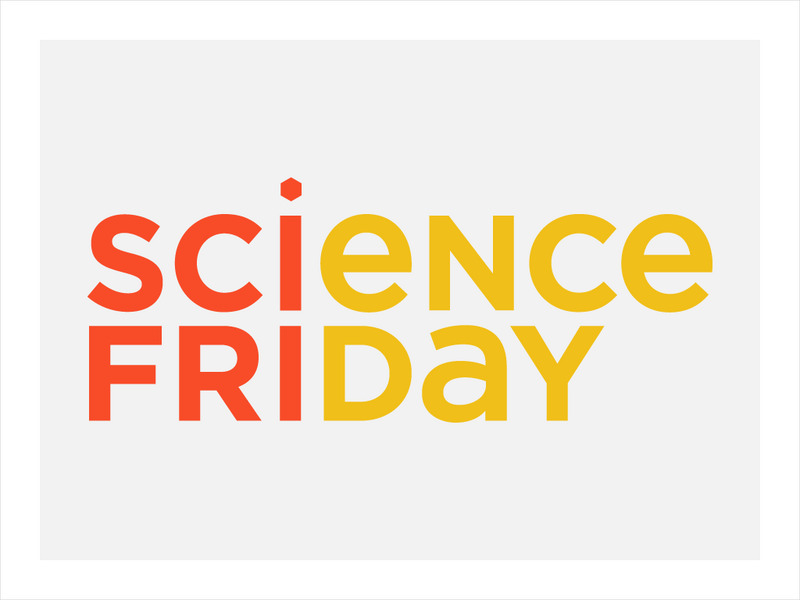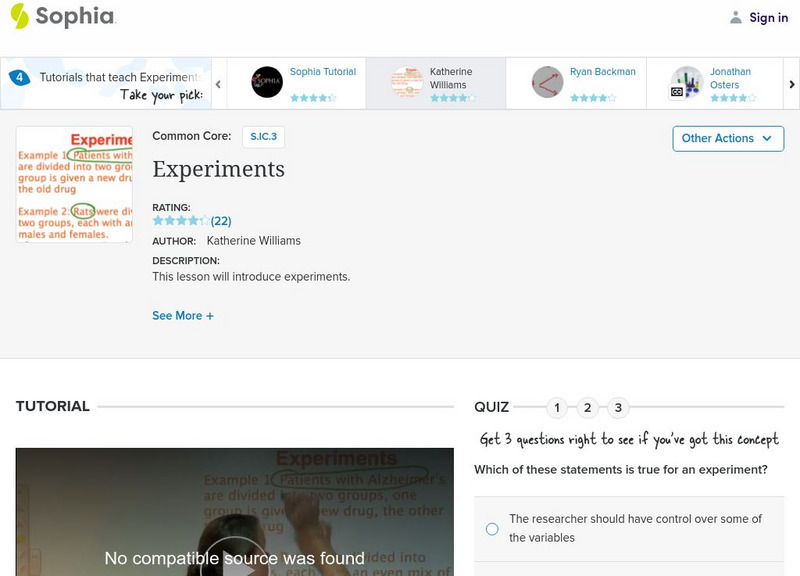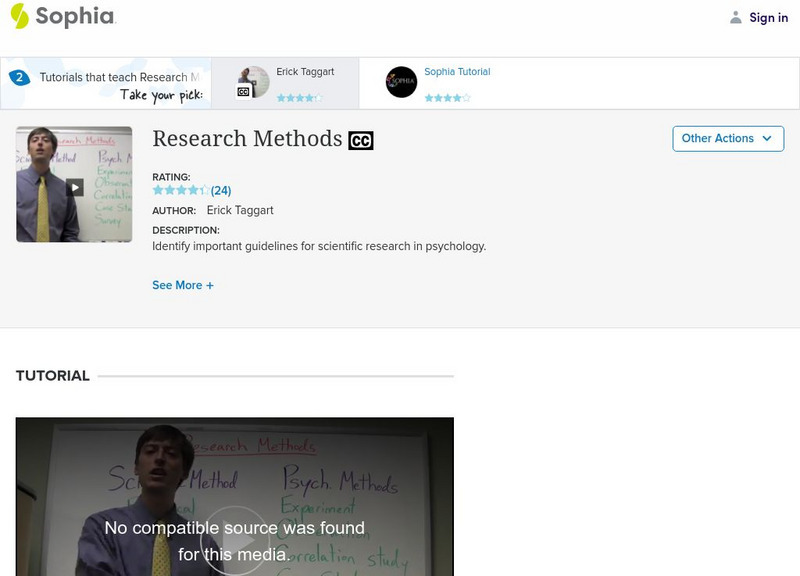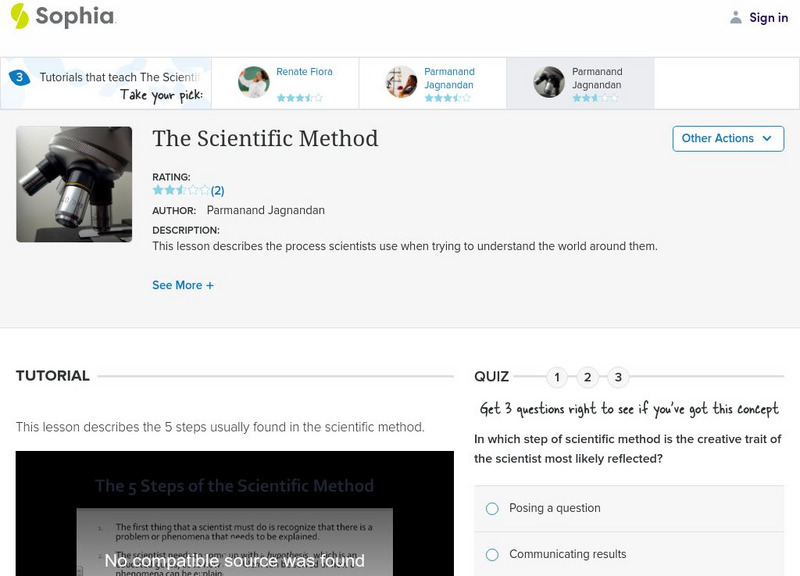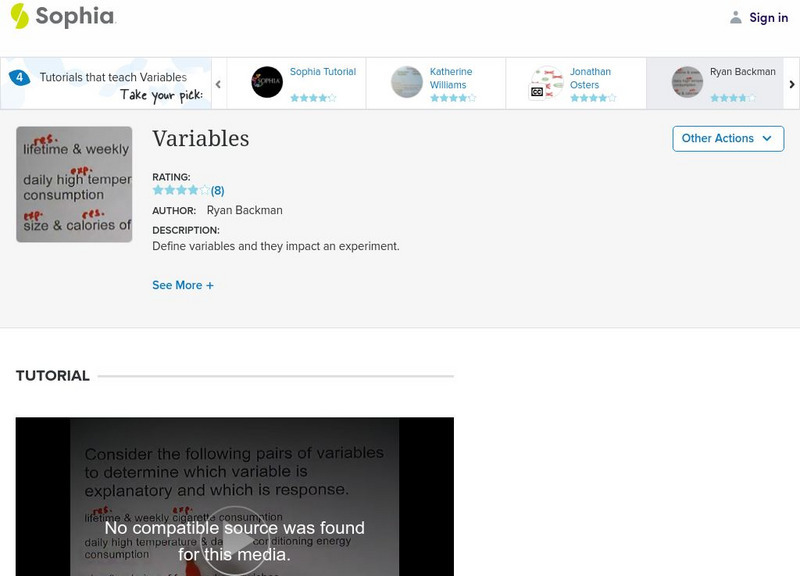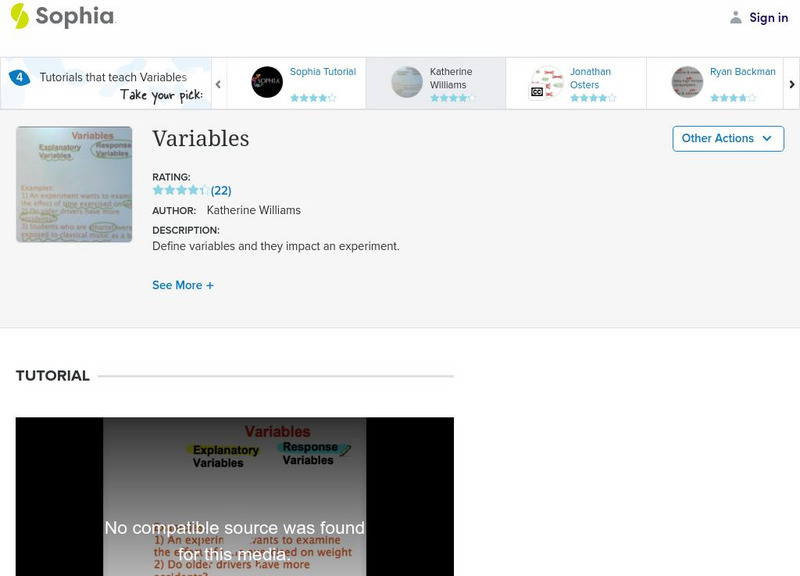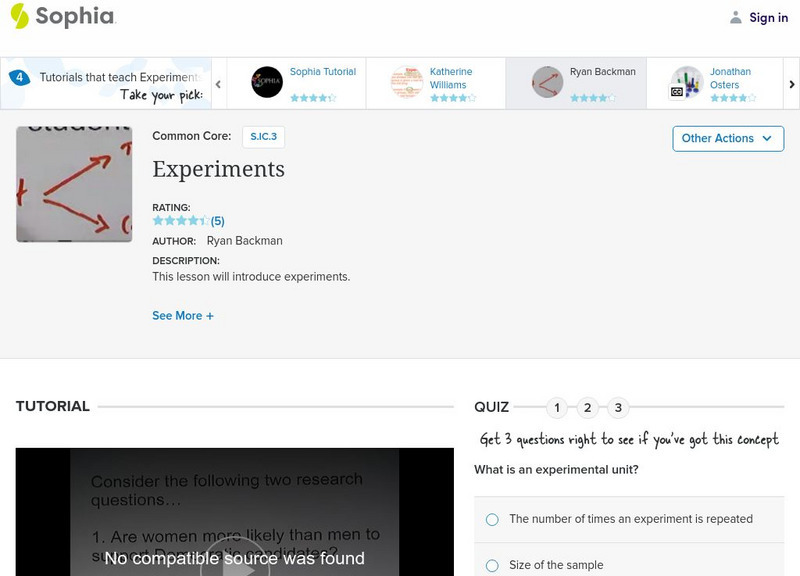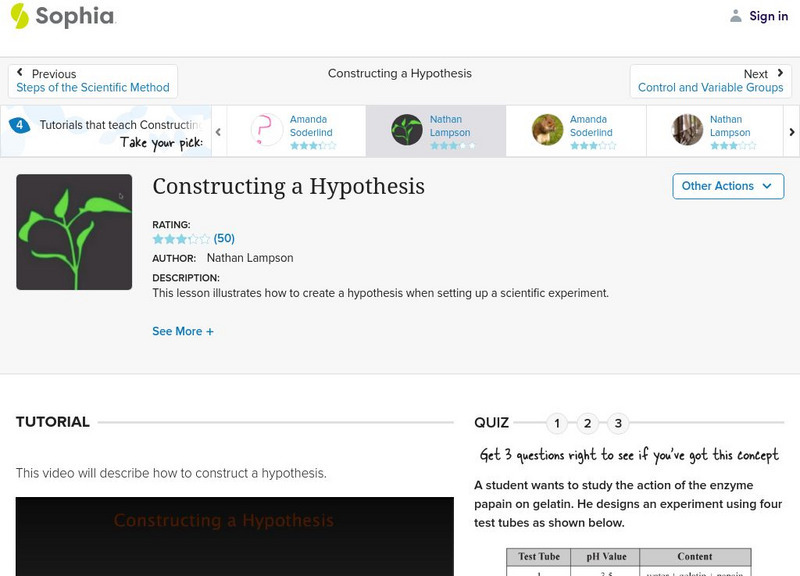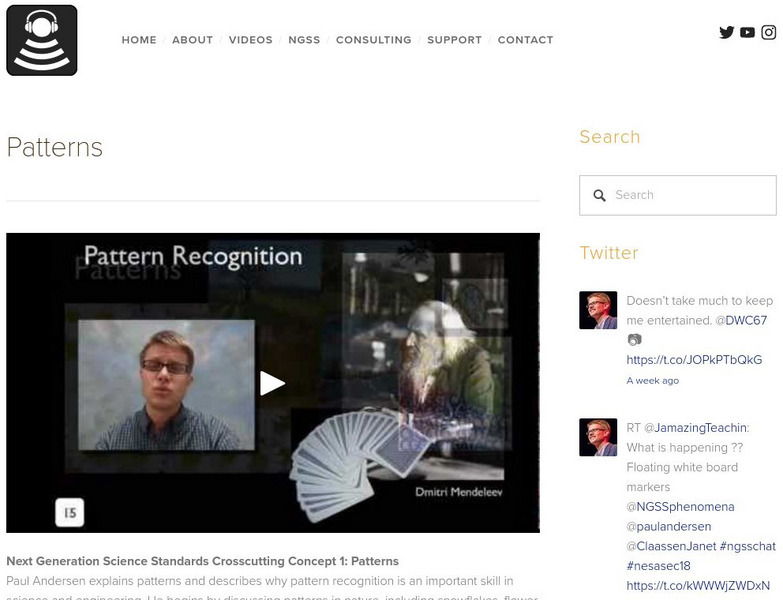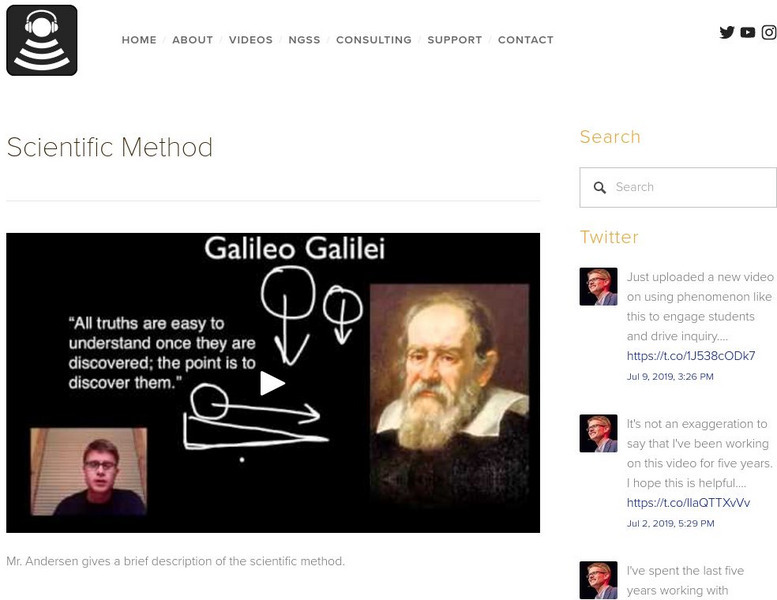PBS
Pbs Learning Media: Hot Air Balloons
Watch kids use the scientific method to figure out why hot air can lift things. Discover how a hot air balloon works.
PBS
Pbs Learning Media: Snakes
Observe the behavior of a king snake, milk snake, corn snake and python. Watch kids use the scientific method to find out if one can tell what food a snake craves by its tongue flicks.
Annenberg Foundation
Annenberg Learner: Thinking and Communicating Like a Biologist
The goal of this seven-day unit is to look at the big ideas in science literacy. This video on how to think and communicate like a biologist is the first lesson in the unit. [7:23]
Khan Academy
Khan Academy: The Scientific Method
How the scientific method is used to ask questions and test explanations.
PBS
Pbs Learning Media: Meet the Helpers: Scientists Are Helpers: Quick Look
Helpers are part of every community. We can help children learn about important helpers in a calm and fun environment, so when an emergency strikes, they will understand who to look for and how to help. [1:00]
Next Vista for Learning
Next Vista for Learning: The Scientific Method
A video explaining how the scientific method was used in an experiment to see if Mentos in coke makes an explosion. Steps of the scientific method are explained in the context of the problem trying to be solved. [1:39]
Science Friday Initiative
Science Friday: Looking Forward to a Year of Science
A yearlong celebration of science kicks off to honor scientific methods and discoveries.
PBS
Pbs Teachers: Canine Intelligence
Observe the behavior of two different dogs. See how two kids use the scientific method to determine which of their dogs is better at solving problems.
PBS
Pbs Teachers: Wind Tunnel
Discover how researchers use wind tunnels to test automobiles and airplanes. Watch kids use the scientific method to find out which vehicle shape is the most aerodynamic. [6:06]
Sophia Learning
Sophia: Experiments: Lesson 7
This lesson will introduce experiments. It is 7 of 9 in the series titled "Experiments."
Sophia Learning
Sophia: Research Methods: Lesson 5
This lesson will explore research methods, delineate the steps of the scientific method. It will also discuss experiments, survey research, focus groups, participant observation and using secondary sources for analysis. It is 5 of 9 in...
Sophia Learning
Sophia: Research Methods: Lesson 2
This lesson will introduce guidelines for scientific research, as well as common research methods in the field of psychology. It is 2 of 9 in the series titled "Research Methods."
Sophia Learning
Sophia: Steps of the Scientific Method: Lesson 2
This lesson will explain the steps involved in the Scientific Method. It is 2 of 4 in the series titled "Steps of the Scientific Method."
Sophia Learning
Sophia: The Scientific Method: Lesson 3
This lesson describes the process scientists use when trying to understand the world around them. It is 3 of 7 in the series titled "The Scientific Method."
Sophia Learning
Sophia: Variables: Lesson 3
This lesson will explain the variables used in any study. It is 3 of 6 in the series titled "Variables."
Sophia Learning
Sophia: Variables: Lesson 4
This lesson will explain the variables used in any study. It is 4 of 6 in the series titled "Variables."
Sophia Learning
Sophia: Experiments: Lesson 6
This lesson will introduce experiments. It is 6 of 9 in the series titled "Experiments."
Sophia Learning
Sophia: Applying the Scientific Method: Lesson 1
This lesson shows how to use the scientific method when performing an experiment. It is 1 of 4 in the series titled "Applying the Scientific Method."
Sophia Learning
Sophia: Control and Variable Groups: Lesson 2
This lesson will explain the difference between a control group and variable groups, when using the scientific method. It is 2 of 4 in the series titled "Control and Variable Groups."
Sophia Learning
Sophia: Research Methods: Lesson 9
This lesson will explore research methods, delineate the steps of the scientific method. It will also discuss experiments, survey research, focus groups, participant observation and using secondary sources for analysis. It is 9 of 9 in...
Sophia Learning
Sophia: Constructing a Hypothesis
A video lesson over viewing how to construct a hypothesis explaining the guidelines that need to be followed. Understand that a hypothesis must be logical, account for relevant information, be testable, and be in the simplest form. [2:21]
Bozeman Science
Bozeman Science: Apb Practice 5 Analysis & Evaluation of Evidence
In this video, Paul Andersen explains how scientists analyze data and evaluate evidence. He starts with a description of data and how it must be properly displayed. He then describes types of data in each of the four big ideas. He...
Bozeman Science
Bozeman Science: Patterns
Paul Andersen explains patterns and describes why pattern recognition is an important skill in science and engineering. He begins by discussing patterns in nature, including snowflakes, flower petals, seasons and nucleotides in DNA. He...
Bozeman Science
Bozeman Science: Scientific Method
Mr. Andersen gives a brief description of the scientific method.



